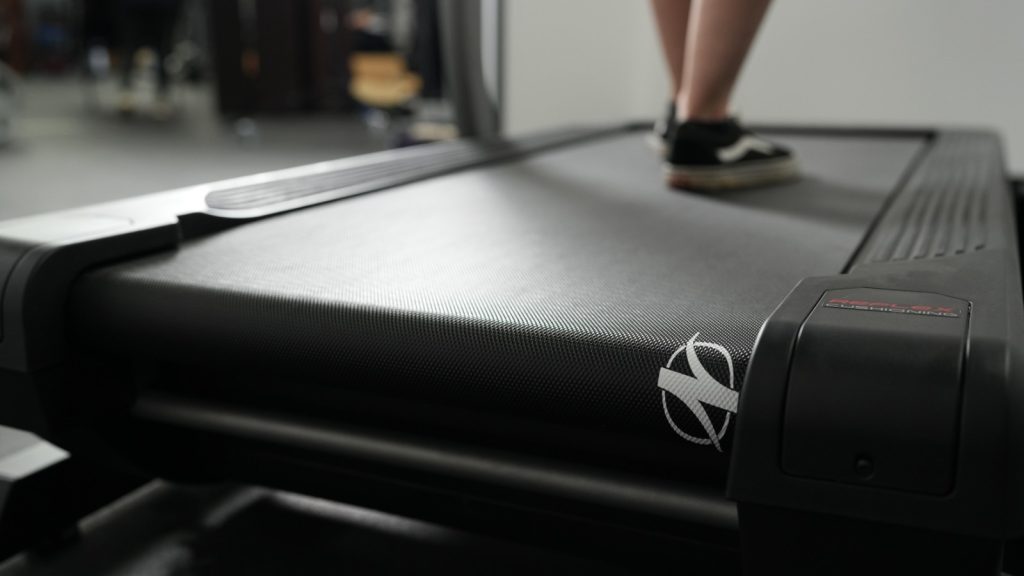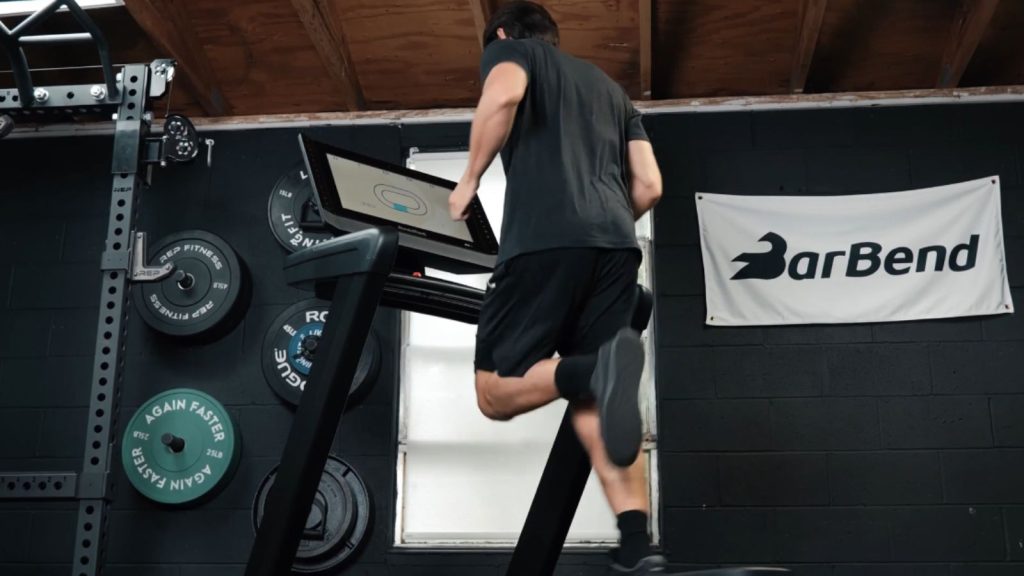If you’re the average gymgoer, you probably haven’t spent too much time thinking about how a treadmill operates from the inside. But if you’re in the market for a big-ticket item like fitness equipment, understanding the basics of treadmill motors can help you make the best decision for your fitness needs and ultimately prolong the lifespan of your purchase.
Knowing the best treadmills on the market is a great place to start. In addition, knowing your fitness goals will allow you to choose the treadmill that’s best suited for your personal use and can make a big difference in your bank account. Let’s break down the key components of a treadmill motor and, more importantly, what they mean in finding the right treadmill for you.
What Is a Treadmill Motor?
Similar to most mechanical machines, a treadmill requires energy. Most treadmills rely on an electric motor to convert electrical energy into kinetic (moving) energy — hence, how the belt starts moving.

All electric treadmills contain a drive motor to put the treadmill belt in motion. Treadmills with an incline feature typically have two separate motors — a drive motor and an incline motor — and both have distinct purposes.
(Side note: If you’re looking for an insane cardio workout that doesn’t require a motor, you might be interested in this Assault AirRunner Treadmill review. But I should warn you, manual treadmills don’t provide just your average cardio.)
Drive Motor
The drive motor of a treadmill ( also known as the primary motor or gear motor) is the “muscle” behind moving the treadmill belt. Once the treadmill receives the energy from its power supply, it goes to the motor controller board — the brain.
In conjunction with the motor controller, the drive motor transfers motion to a flywheel or front roller, which powers the belt and determines the motor speed.
The treadmill motor controller, also known as the servo controller, is essentially the command center that tells the treadmill how fast to go and how much power to exert.
Other helpful components to know about but aren’t necessary to buy a treadmill are (don’t worry — there’s no quiz at the end of this):
Control Board
The control board of a treadmill works as the controller of various functions, such as the display, the incline, the heart rate monitor, and any connectivity features. It’s not to be confused with the motor controller that strictly controls the motor.
Speed Controller
Just like the name implies, the speed controller does exactly that. The speed controller is hard at work every time you adjust the speed, sending the right amount of volts to adjust the motor speed.
Incline Motor
The incline motor— also known as a thrust or actuator — is the “muscle” behind elevating a treadmill and relies on the motor control board in the same way as the drive motor.

Both motors have important purposes, but the cost and power output of the incline motor are much less than the drive motor. While some folding treadmills don’t offer the incline feature and won’t have the additional incline motor, many of the best folding treadmills do.
Types of Treadmill Motors
Treadmill motors can generally be categorized into two main types of electric motors based on their functionality and construction. Let’s assume no one reading this is an engineer and break this down in layman’s terms.
Direct Current (DC) Motor
A DC motor needs a direct current power source such as batteries or it needs to be converted to alternating current from the power outlet into direct current.
Here’s how it works: The alternating current from the wall outlet (where you plug it in) is converted into direct current using a rectifier circuit. The rectifier converts the AC into DC — not to be confused with the legendary rock band (though the electric bolt in their logo might make a little more sense now).
Alternating Current (AC) Motor
An AC motor relies on the standard electrical power supply found in most US homes and buildings’ electrical sockets — alternating current. AC motors don’t require rectifiers or conversion and operate directly on the AC.
So why does the motor matter? This may seem irrelevant, but it plays a critical role in the operation of the treadmill and ultimately will help you decide which type of treadmill motor is best for your needs.
Here’s a quick guide for common important factors in choosing the right type of motor:
| AC Motors | DC Motors |
|---|---|
| Longevity/Less maintenance | Less noise |
| Durability | Energy efficiency |
| Smooth operation for longer runs | Compact size |
| Higher torque and power | Lower cost |
| Ability to handle heavier weight | Quick start-up/speed change |
For the reasons above, a treadmill DC drive motor is most commonly found in home fitness equipment, while the AC motor is generally used in commercial models for high-use facilities like fitness centers. You likely won’t find a DC motor-powered treadmill during your visit to Gold’s Gym.
Treadmill Motor Horsepower
Arguably one of the most important specs consumers look at when shopping for a treadmill is the horsepower (HP) of the motor.
(However, with the ever-increasing popularity of brands like Peloton, another popular feature is interactive training. If you’re looking for a NordicTrack treadmill that won’t break the bank with these bells and whistles, check out our NordicTrack Commercial 1250 Treadmill review.)
The HP is the measurement of the motor’s power output and the peak horsepower reflects the maximum of what the motor can handle. The peak horsepower is also referred to as PHP.
But just like you can’t bench your max weight for an extended amount of reps, a treadmill motor can’t sustain its peak horsepower for an extended period of time. A more accurate depiction of what your treadmill motor can handle is called continuous horsepower (CHP) or continuous duty horsepower.
The CHP reflects what the treadmill motor can handle over an extended period and is much more accurate in determining the motor’s capability. If you’re a runner, the best treadmills for running will have a CHP built for those longer treadmill sessions.

“For the motor, continuous horsepower (CHP) is ideal, and runners who train at a high volume will want to look for a CHP of 3.0,” says BarBend expert reviewer Amanda Capritto, CPT, CES, CNC, CF-L1, CSNC. “However, that may be really tough to find in a budget lineup. If you’re looking to save some dough, you’re likely going to be shopping for treadmills with a CHP of 1.75 to 2.5, since a lower-powered motor is less expensive. Still, these numbers will allow you to walk and jog a few times a week without issue.”
To determine what CHP is right for you, determine how often you (and others) will use the treadmill each week. The below chart can help.
| MPH | Low Use (1-3 times per week) | High Use (4+ times per week) |
|---|---|---|
| Walking (0.5-4) | 1.5 CHP | 2.0 CHP |
| Jogging (4.1-6) | 2.0 CHP | 2.5 CHP |
| Running (6.1+) | 2.5 CHP | 3.0+ CHP |
While you’re treadmill shopping, if the specs are listed as HP treadmill motor capacity, the motor will not be as powerful as the same number in CHP.
Motor Size
Generally speaking, the bigger the motor size, the more you can expect to spend on the treadmill. But before you add anything to your virtual cart, be advised that a bigger motor means nothing unless your training justifies it.
Reasons to Consider a Bigger Motor
- Frequent use (4+ times per week)
- Intense training
- Long-duration jogs/runs
- Need for higher weight capacity
Motor Warranties
There are many treadmill components and the warranty is typically different depending on the specific part of the treadmill; parts, motor, frame, and labor. If you’ve got a malfunctioning motor, getting a replacement motor isn’t always the only option. And it’s a good thing, as the regular price of a motor can cost you a pretty penny.
[Related: NordicTrack EXP 7i Treadmill Review]
Before getting a replacement motor for your treadmill, try contacting the manufacturer to see if it’s still covered. Knowing your specific model number and part number will help with the process.
Motor warranties can range anywhere from one year to a lifetime, depending on the brand, model number, and the terms and conditions of the warranty. Many well-known brands offer five- to 10-year warranties, with options to purchase an extended warranty.
Final Word
Knowing the basics of treadmill motors can help you as a consumer understand the difference in durability and features, and explain the large price range on fitness equipment. “For example, a budget-oriented treadmill might have a 2.0 CHP motor that supports speeds up to 9 miles per hour, while a luxury treadmill might have a 3.5 CHP motor that supports speeds up to 12 miles per hour,” says says BarBend expert reviewer Amanda Capritto, CPT, CES, CNC, CF-L1, CSNC.
You might recognize names like NordicTrack, Freemotion, Life Fitness, Bowflex, and Precor, but if you don’t know why these names hold their strong reputation, their name doesn’t matter much. Bigger isn’t always better, so whether you’re looking for top-of-the-line commercial treadmills or the best budget treadmills, take the time to review the motor specs to align your future treadmill with your needs.
FAQs: Treadmill Motors
What type of motor does a treadmill use?
Treadmills generally use a direct current (DC) or alternating current (AC) motor, depending on factors such as durability, performance requirements, noise level, size, power output, price point, and longevity to name a few. There are also manual treadmills on the market that don’t require a motor and are reliant on the user’s effort.
How much does it cost to replace a motor?
The brand, model, horsepower, and motor type will all determine the cost of replacing a motor. If your warranty has expired and you need to call the treadmill doctor, you can expect to pay anywhere from $150-$500 or more, plus any labor costs associated with installing it.
What size motor is best for a treadmill?
The size of the motor should be directly related to how the treadmill is used. Generally, a bigger motor will be more expensive, but a bigger motor is irrelevant to someone who only uses it for walking or occasional light use. Weight, speed and incline ability, horsepower, and frequency of use are all factors that will play a role in choosing the right size motor and increasing the treadmill’s lifespan.